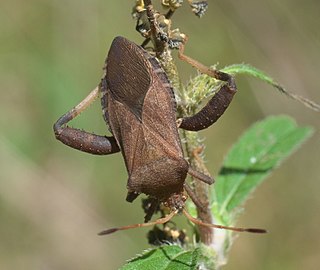
Acanthocerini is a tribe of leaf-footed bugs in the family Coreidae. There are at least 20 genera and 50 described species in Acanthocerini.
Anasa armigera, the horned squash bug, is a species of leaf-footed bug in the family Coreidae. It is found in North America.
Mozena lunata is a species of leaf-footed bug in the family Coreidae. It is found in Central America and North America.

Spartocera is a genus of leaf-footed bugs in the family Coreidae. There are about 18 described species in Spartocera.

Euthochtha is a genus of leaf-footed bugs in the family Coreidae. There is at least one described species in Euthochtha, E. galeator.

Chelinidea vittiger, known generally as cactus coreid, is a species of leaf-footed bug in the family Coreidae. Other common names include the squash bug and cactus bug. It is found in Australia, Central America, and North America.
Cimolus obscurus is a species of leaf-footed bug in the family Coreidae. It is found in North America.

Cimolus is a genus of leaf-footed bugs in the family Coreidae. There are at least four described species in Cimolus.
Sagotylus is a genus of leaf-footed bugs in the family Coreidae. There is at least one described species in Sagotylus, S. confluens.

Narnia is a genus of leaf-footed bugs in the family Coreidae. There are about seven described species in Narnia.
Chelinidea hunteri is a species of leaf-footed bug in the family Coreidae. It is found in Central America and North America.
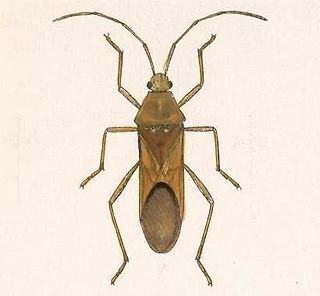
Savius jurgiosus is a species of leaf-footed bug in the family Coreidae. It is found in Central America and North America.

Savius is a genus of leaf-footed bugs in the family Coreidae. There are about nine described species in Savius.

Discogastrini is a tribe of leaf-footed bugs in the family Coreidae. There are about 8 genera and at least 40 described species in Discogastrini.
Mamurius is a genus of leaf-footed bugs in the family Coreidae. There are at least two described species in Mamurius.
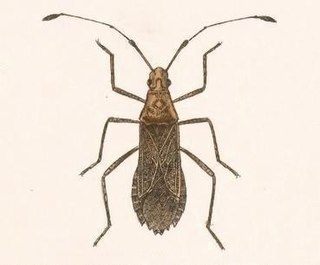
Madura is a genus of leaf-footed bugs in the family Coreidae. There are at least three described species in Madura.
Sethenira is a genus of leaf-footed bugs in the family Coreidae. There are about five described species in Sethenira.
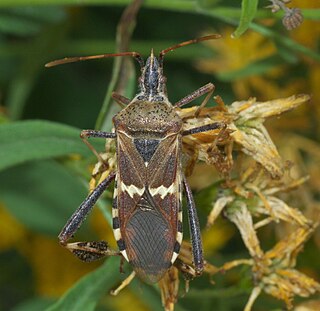
Leptoglossus clypealis, the western leaf-footed bug, is a species of leaf-footed bug in the family Coreidae. It is found in Central America and North America. In the 1980s, Hasan Bolkan discovered that the leaf-footed bug was a cause of lesions on commercially produced pistachio crops.
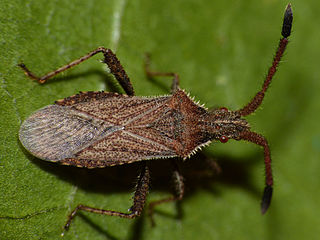
Coriomeris is a genus of leaf-footed bugs in the family Coreidae. There are about 19 described species in Coriomeris.











